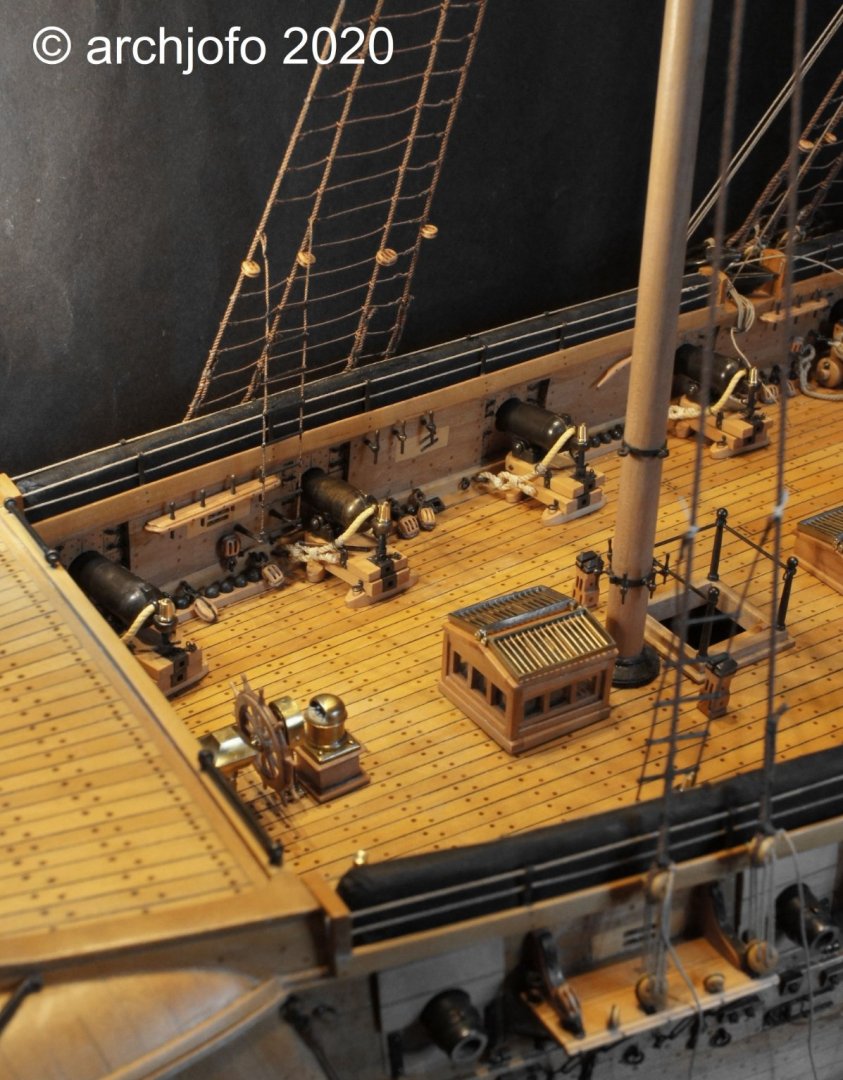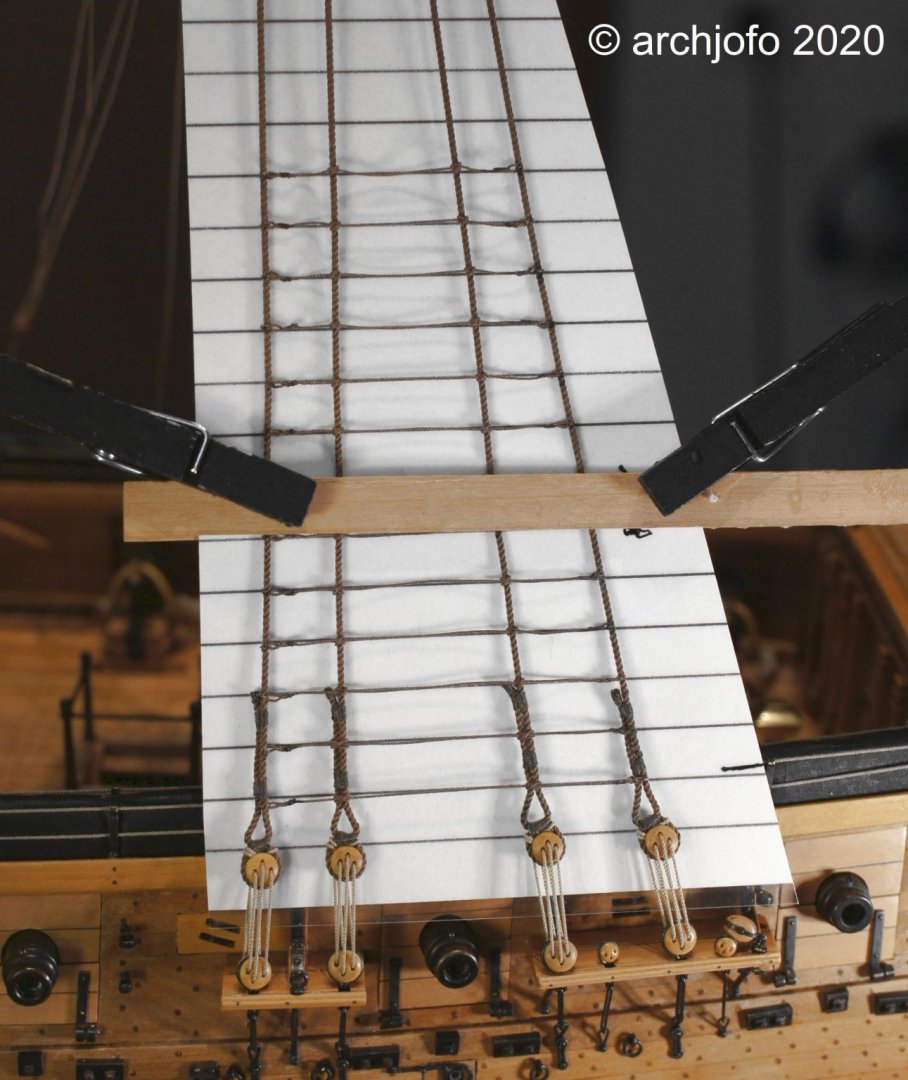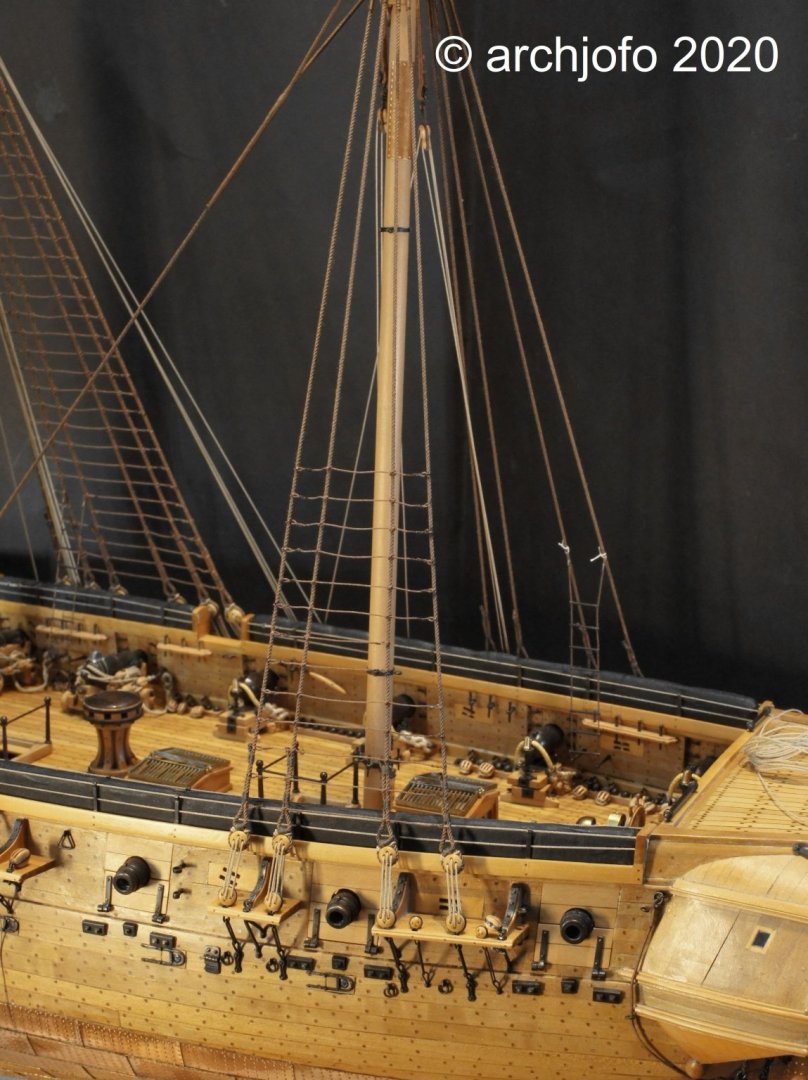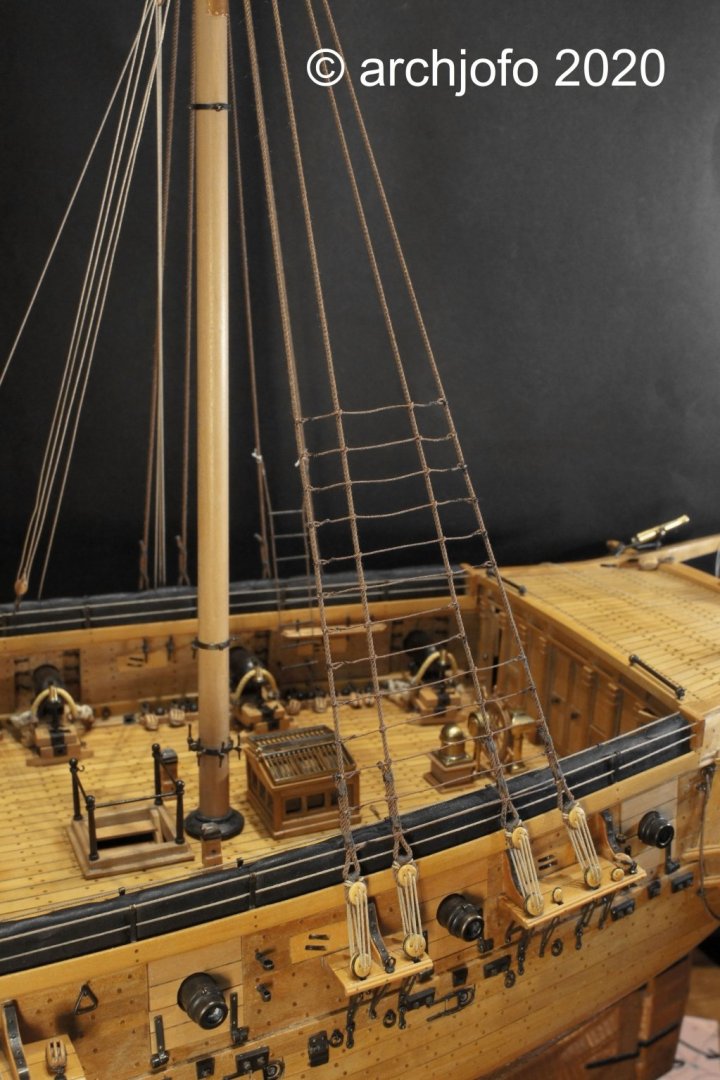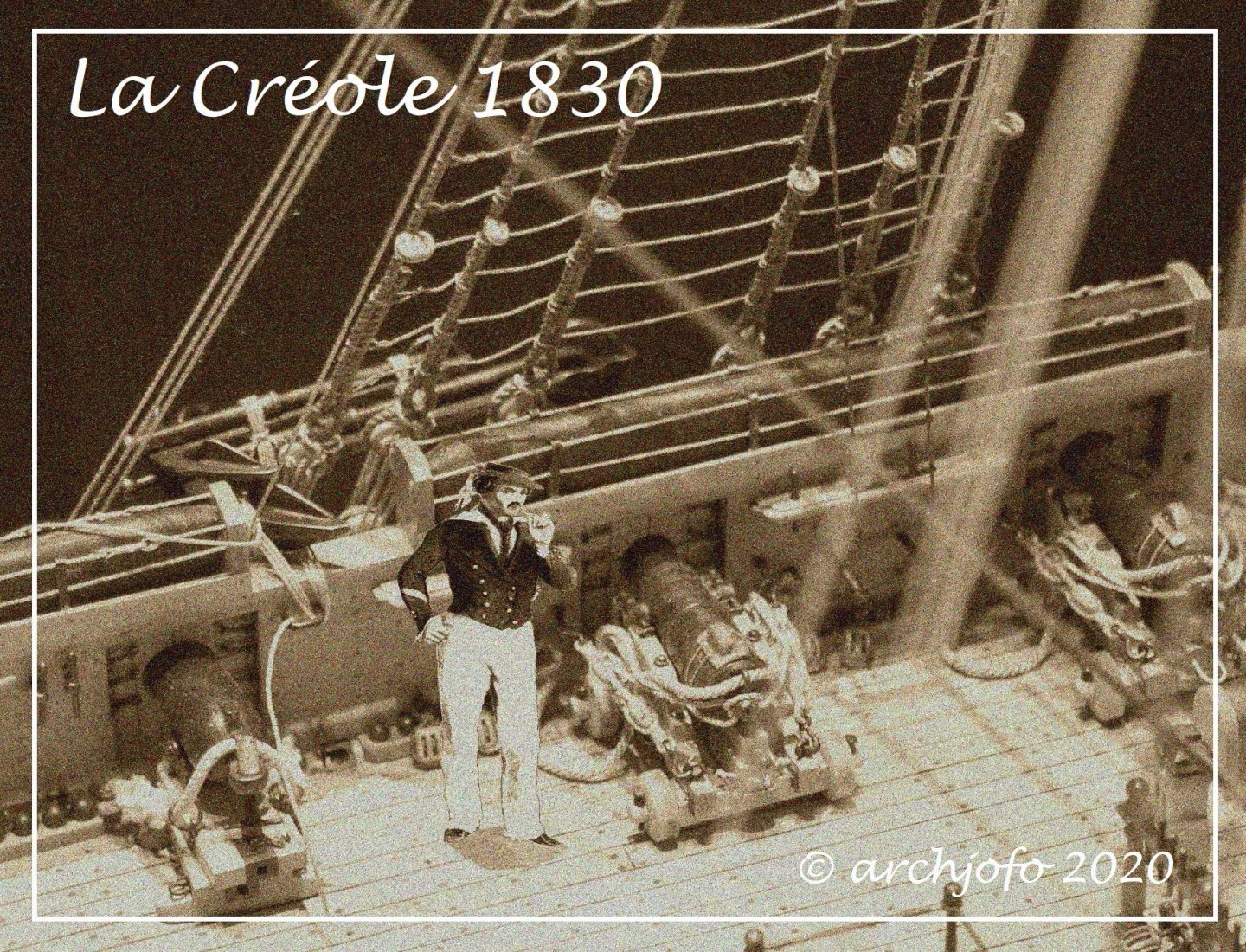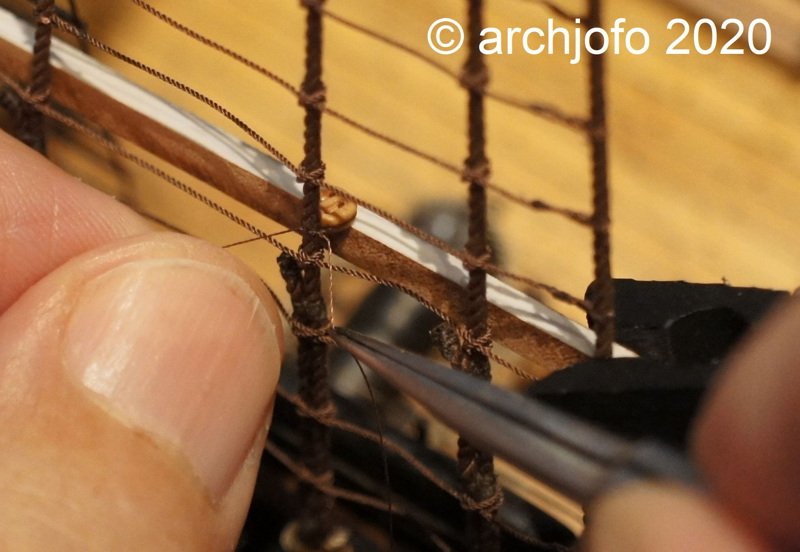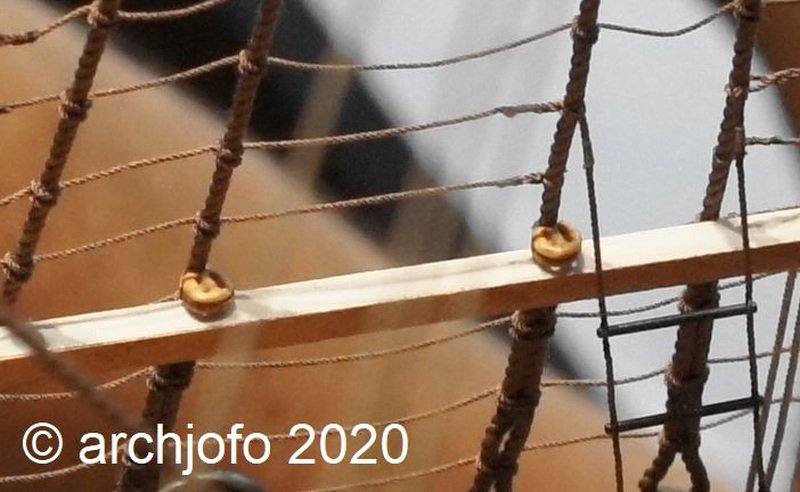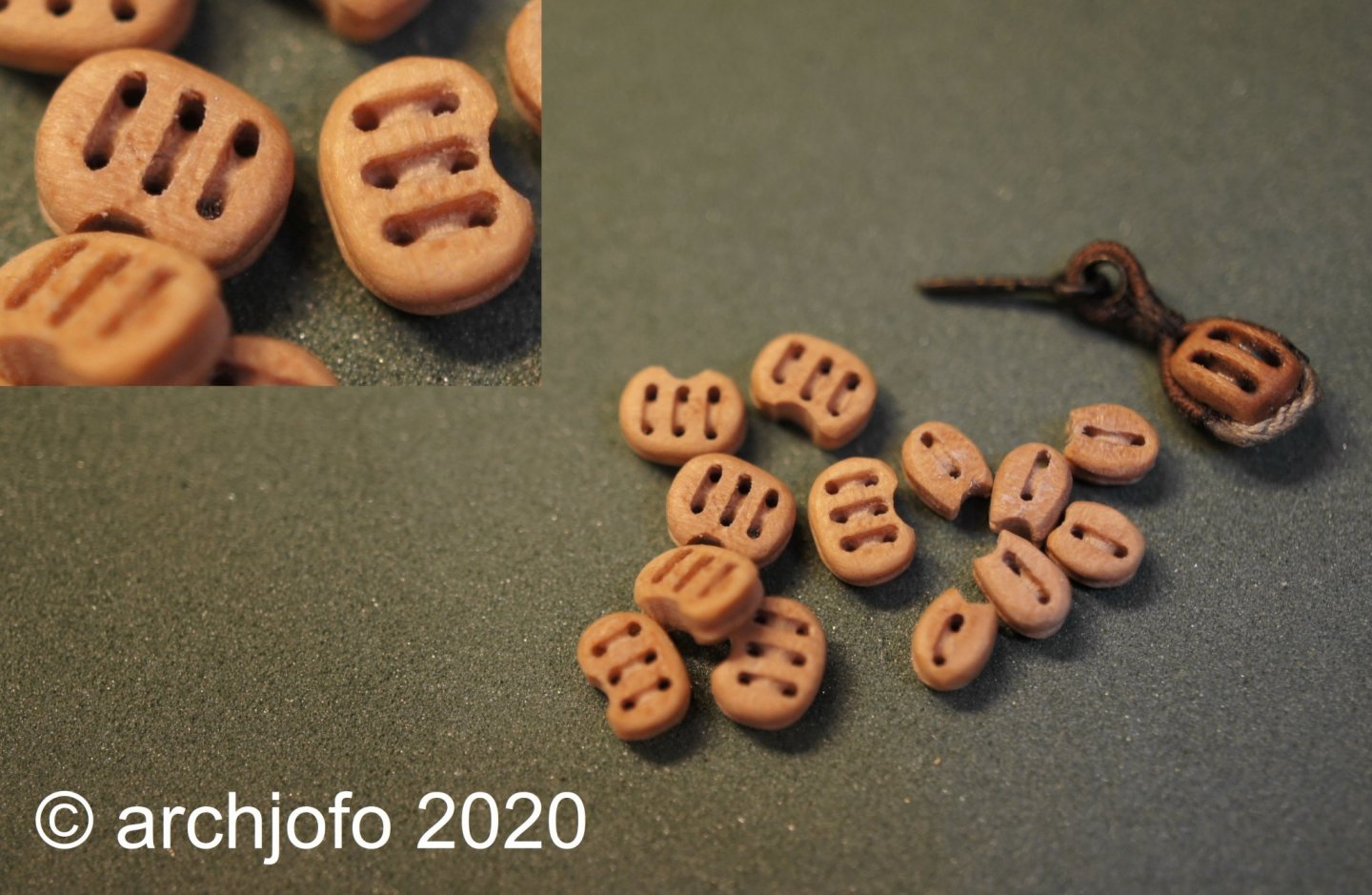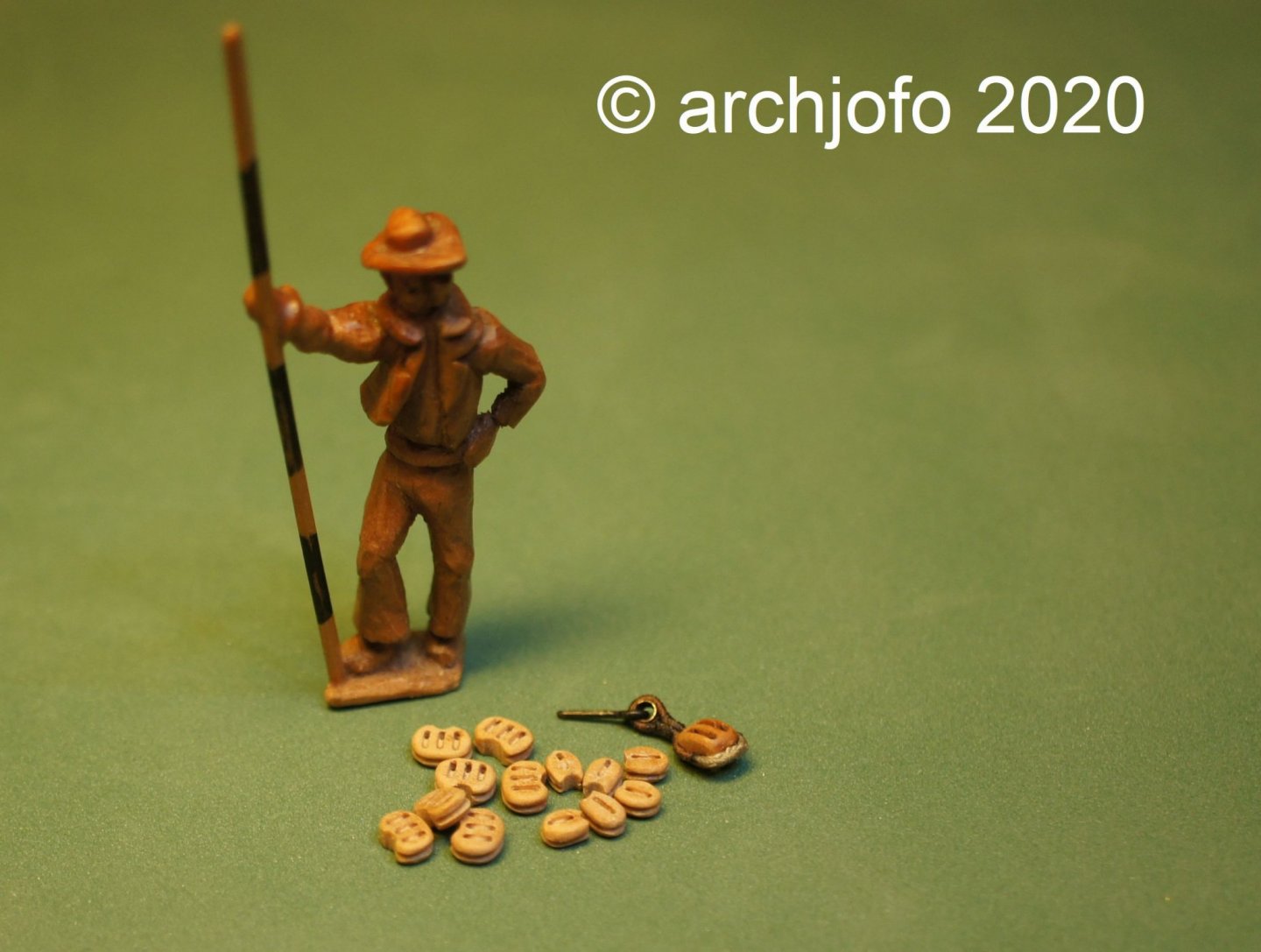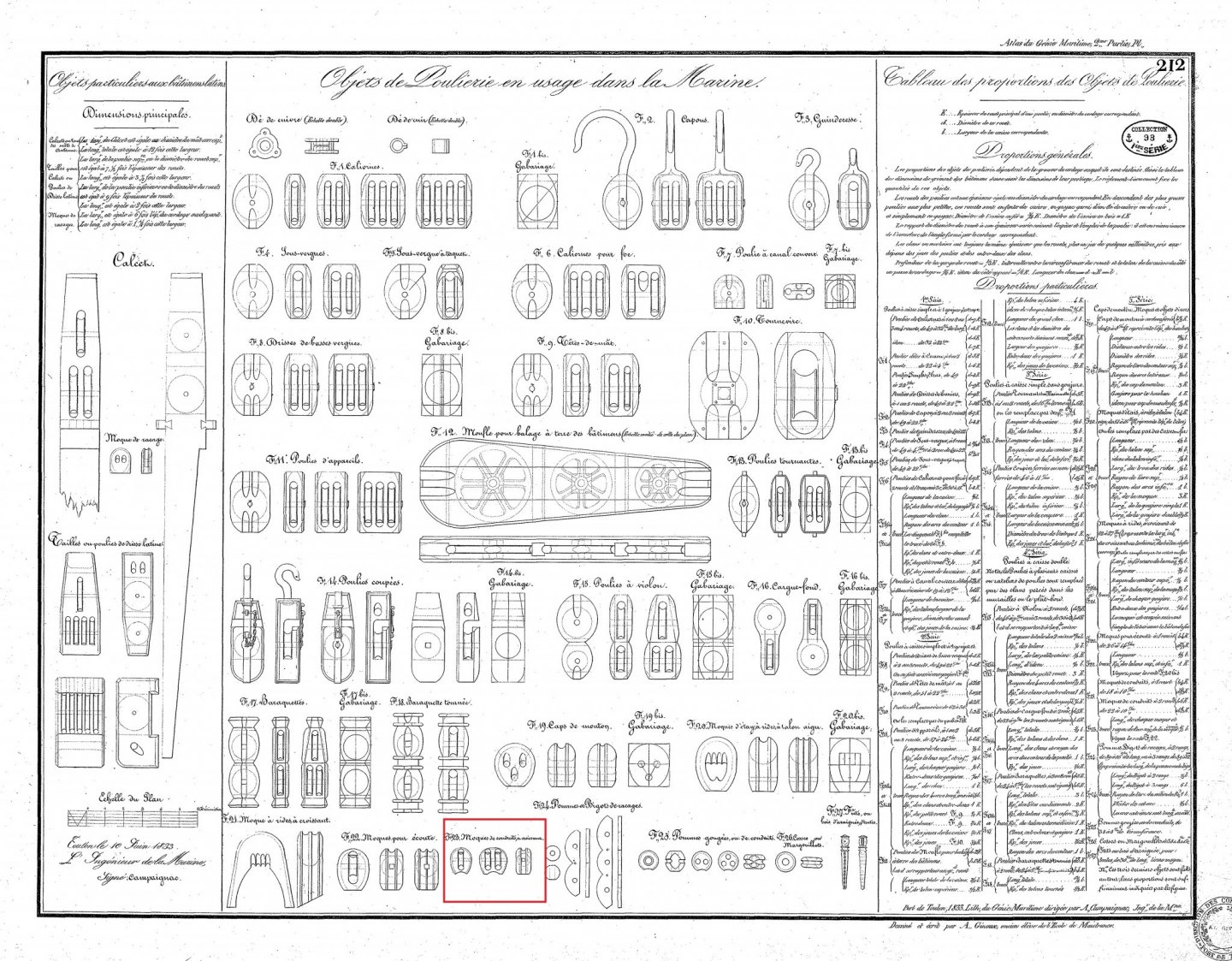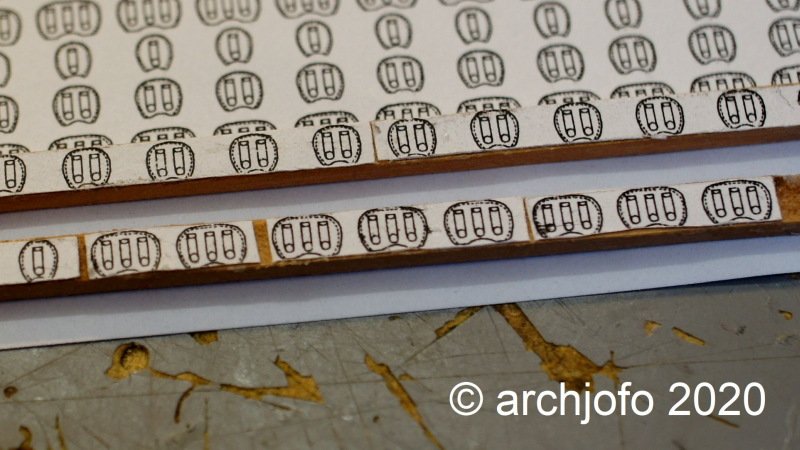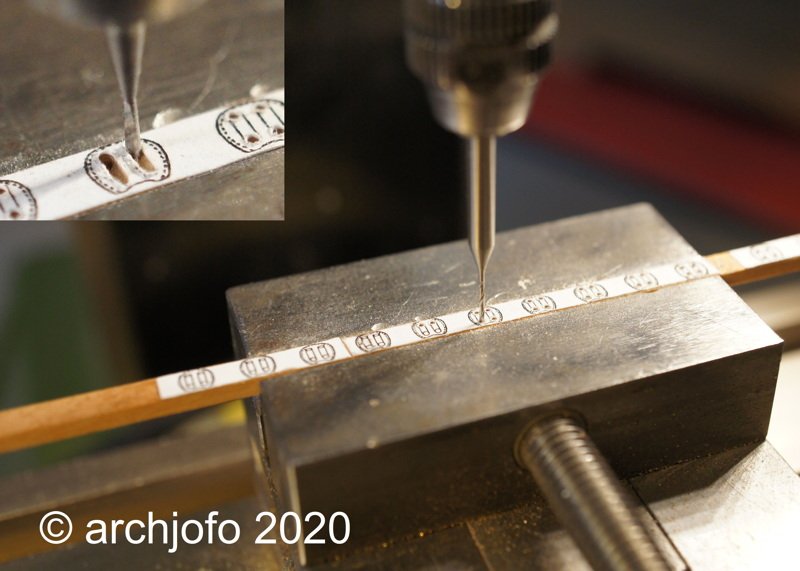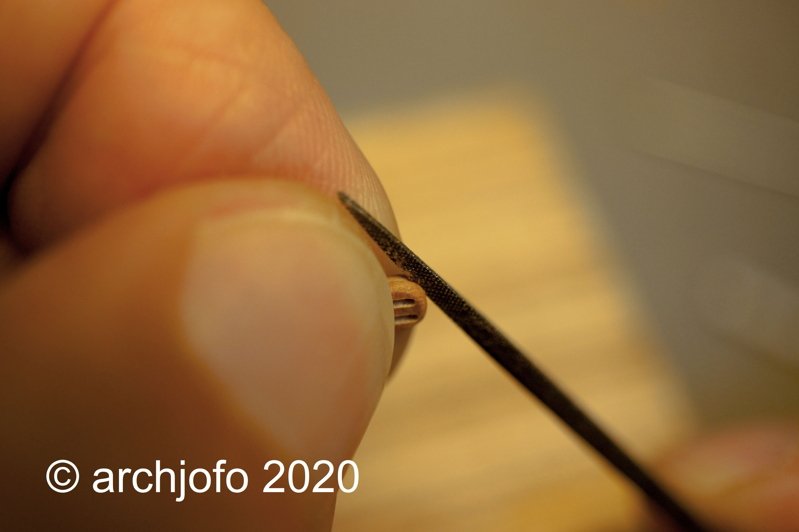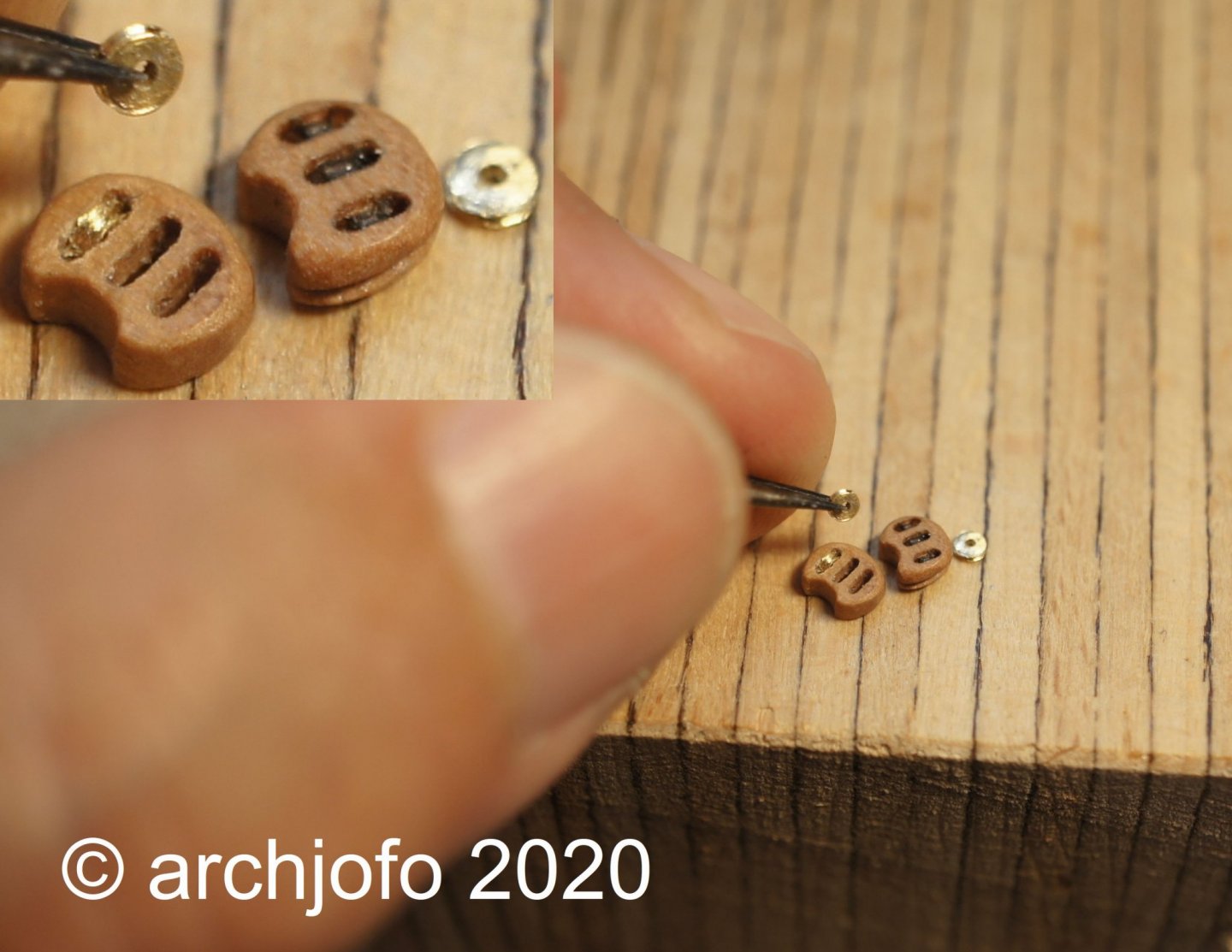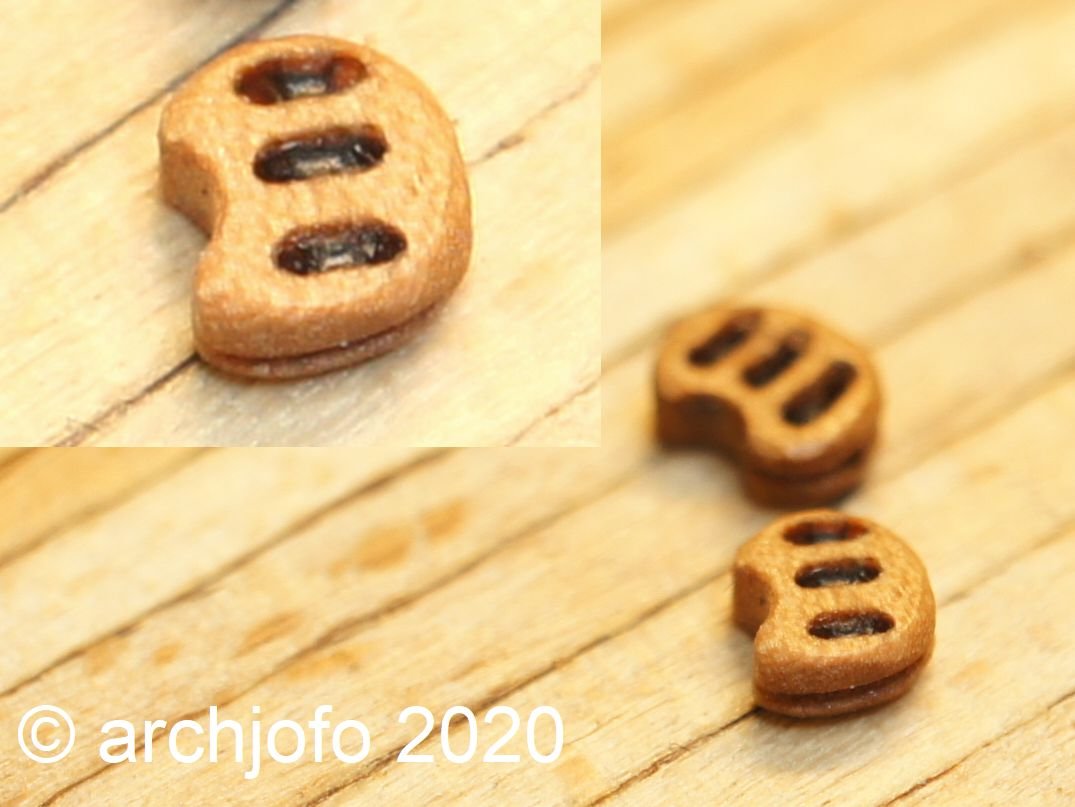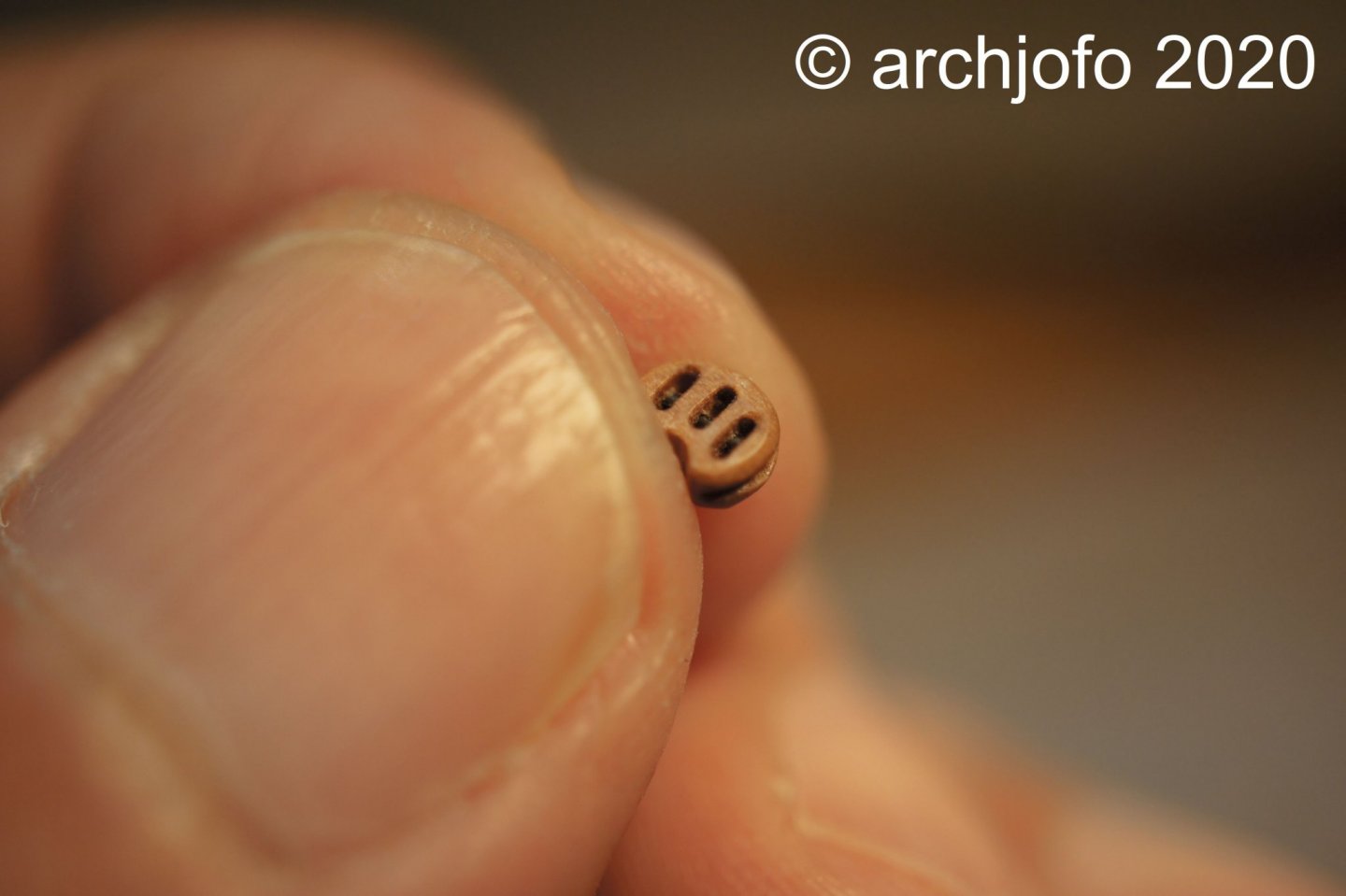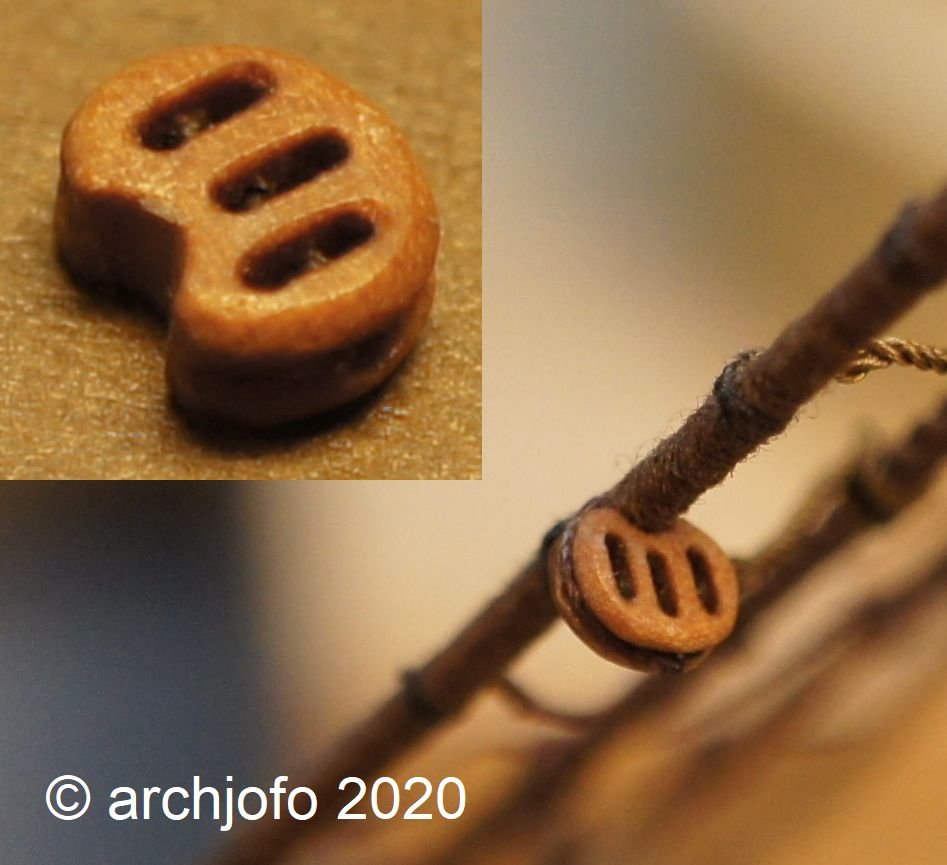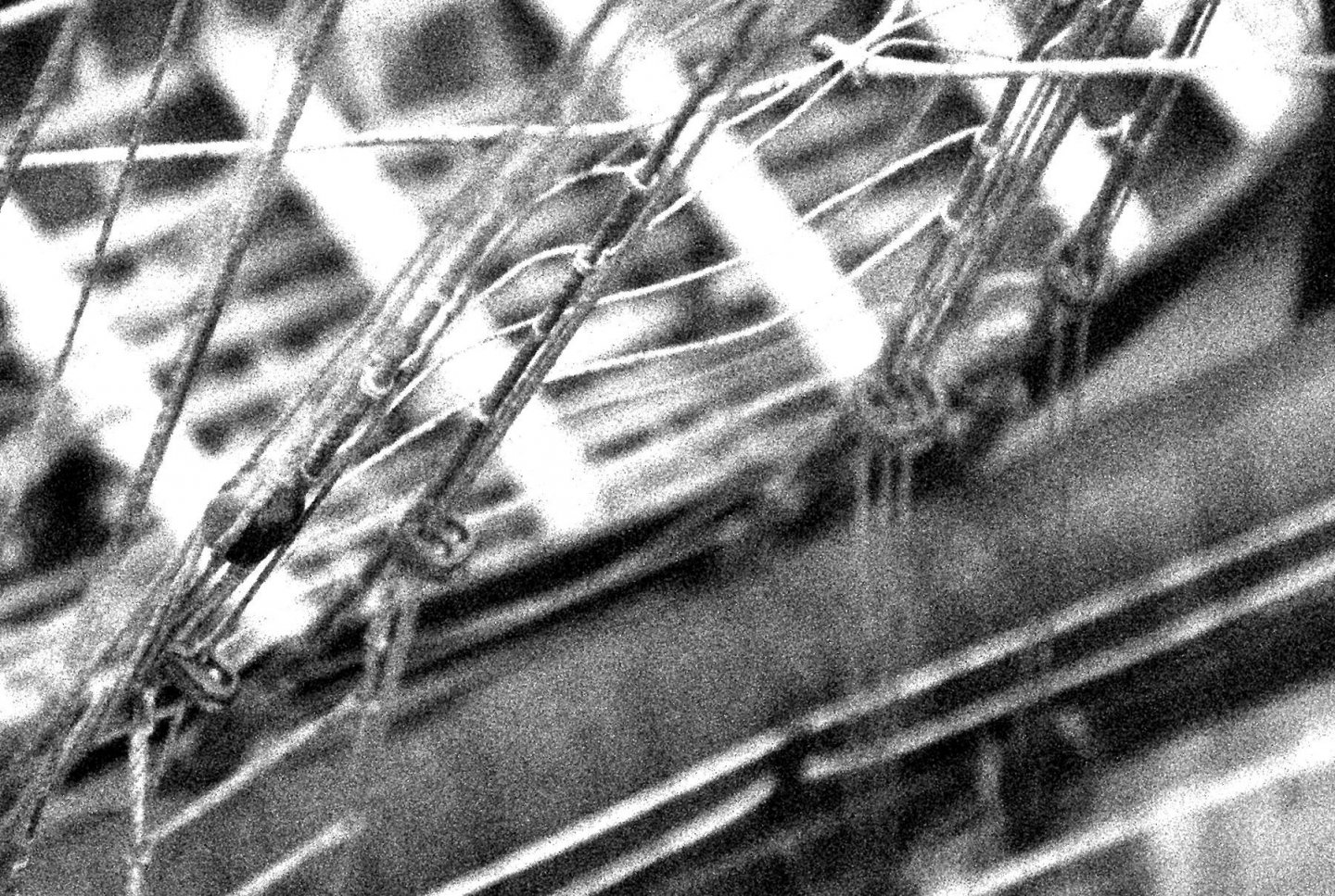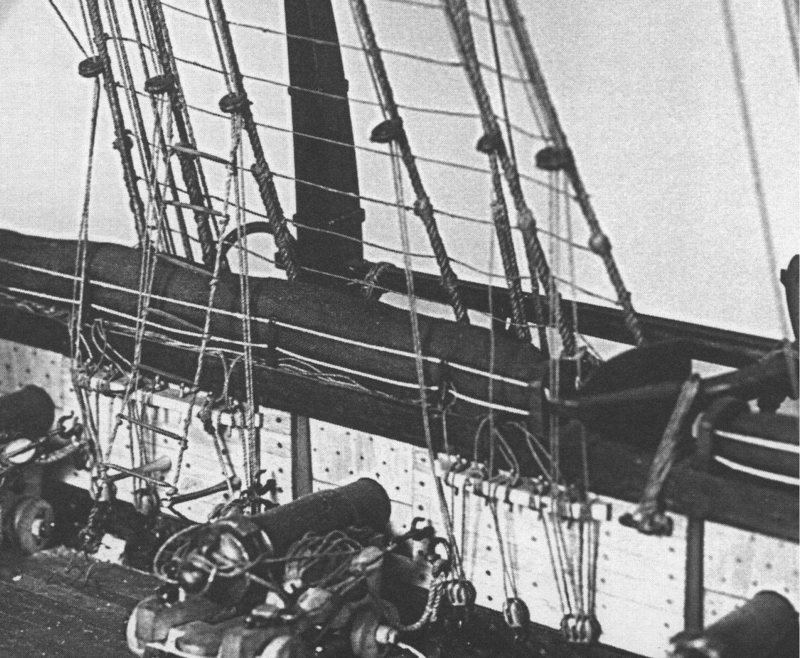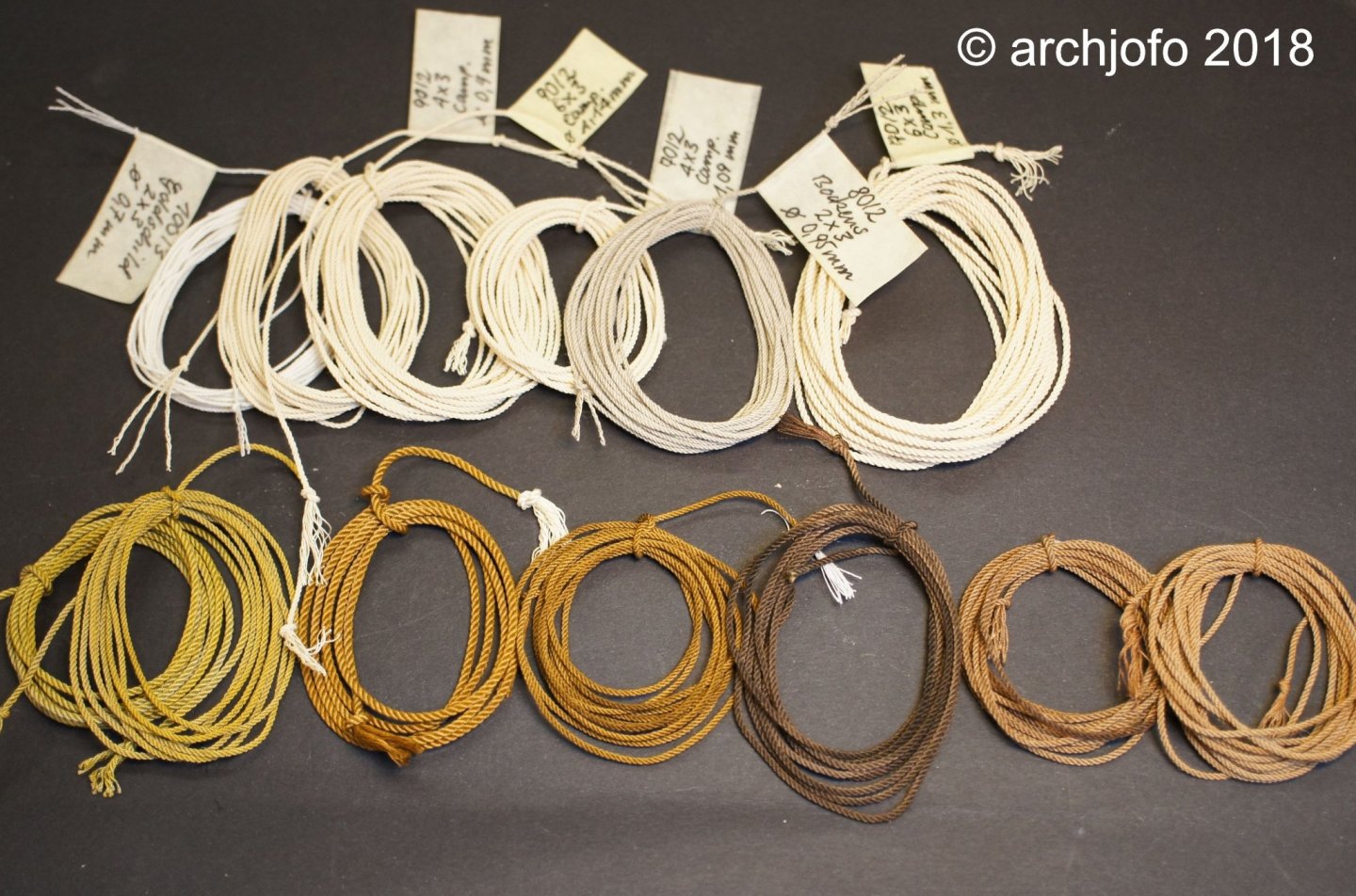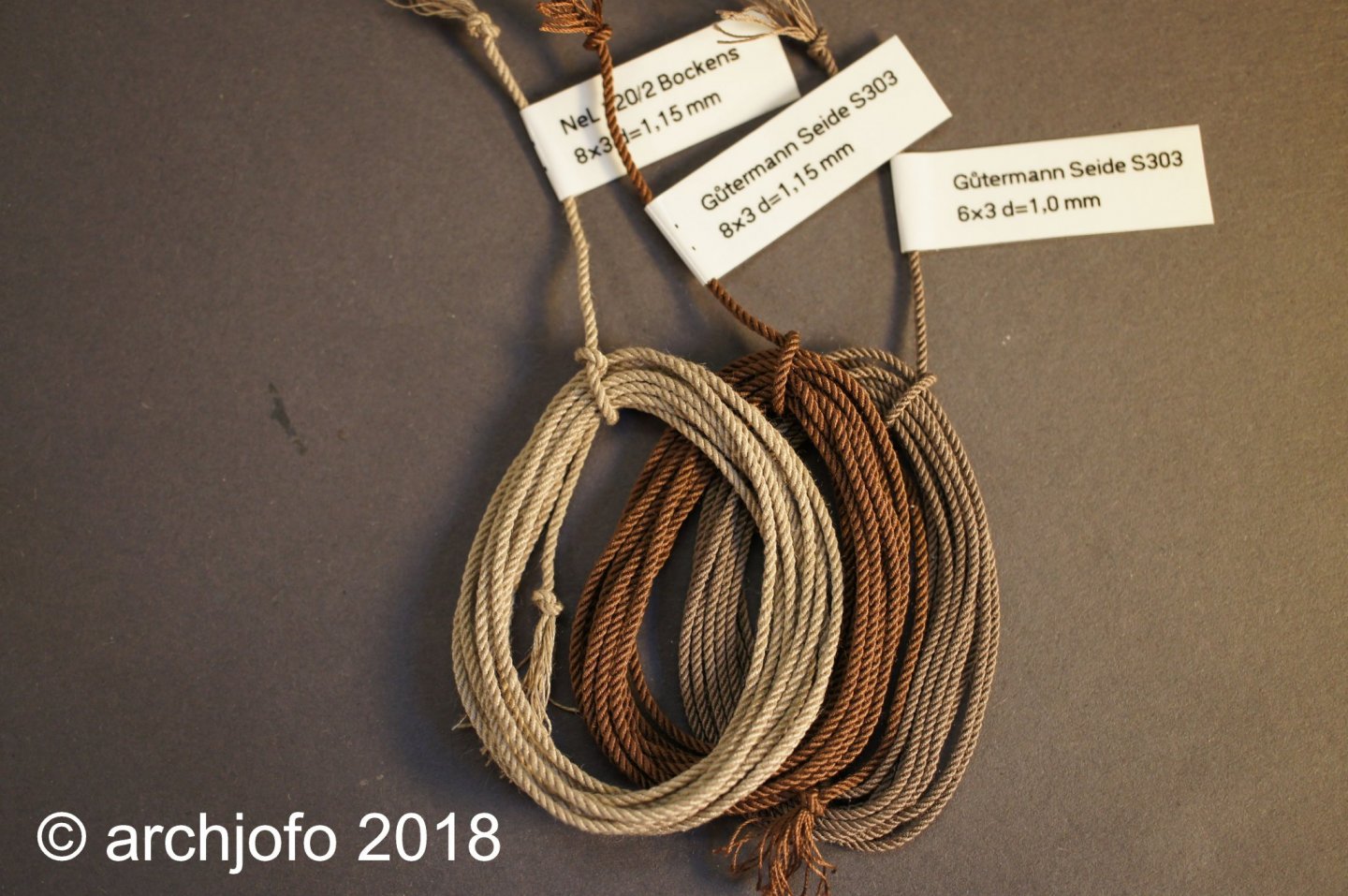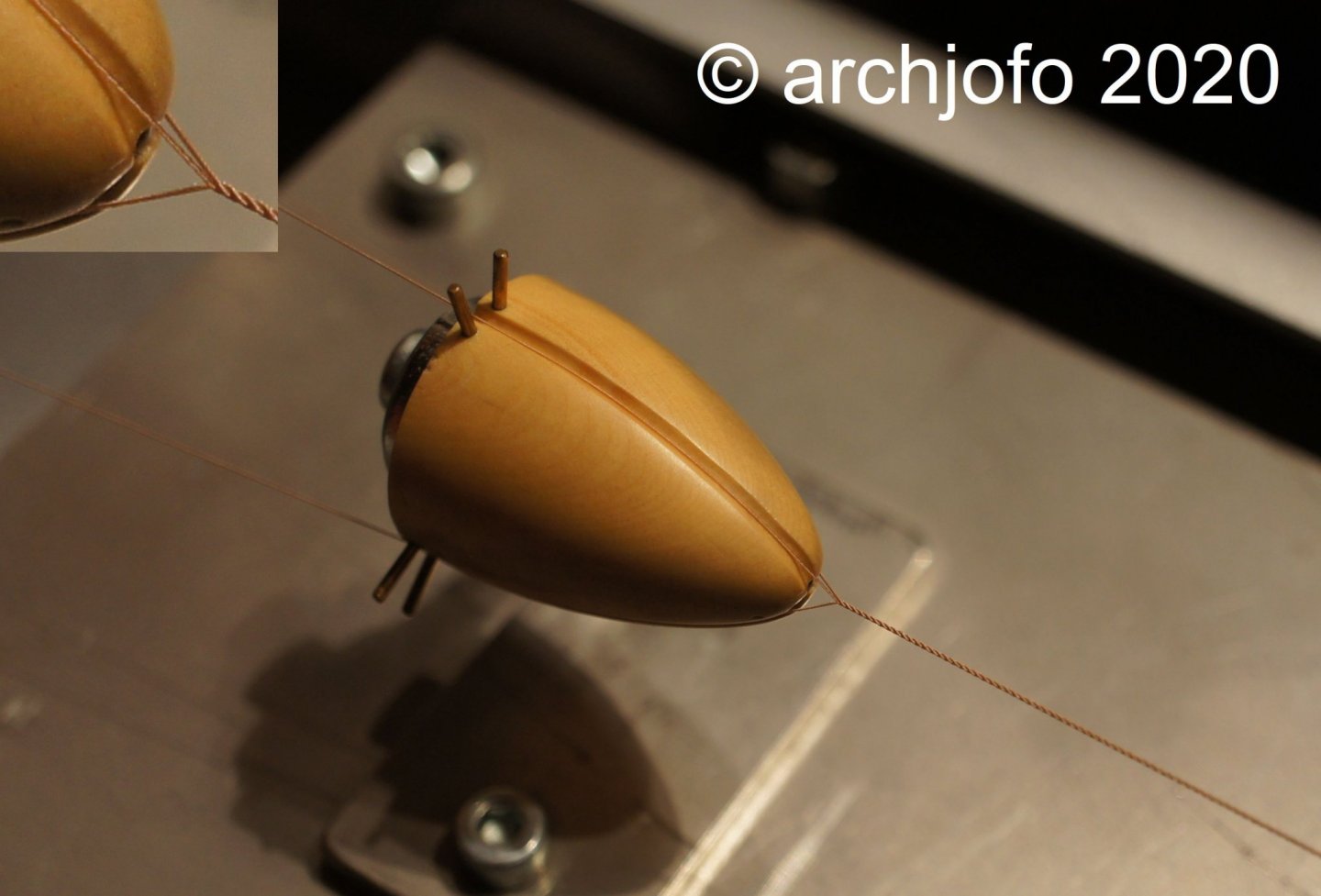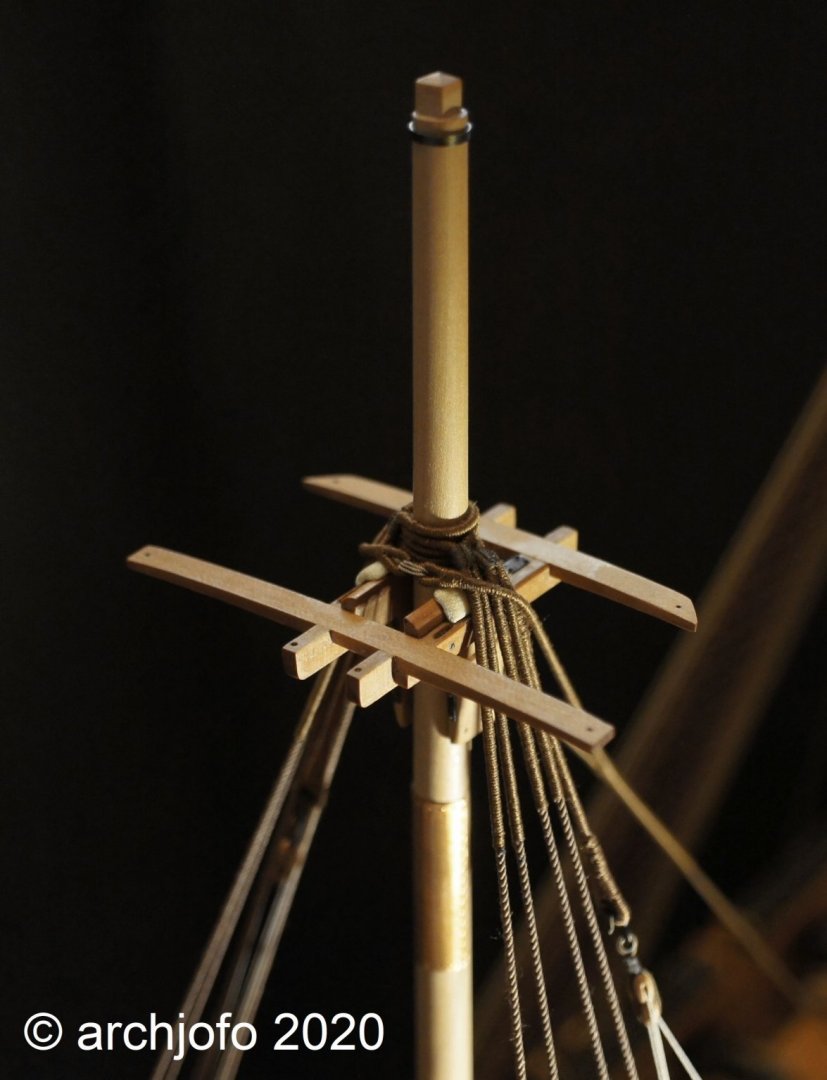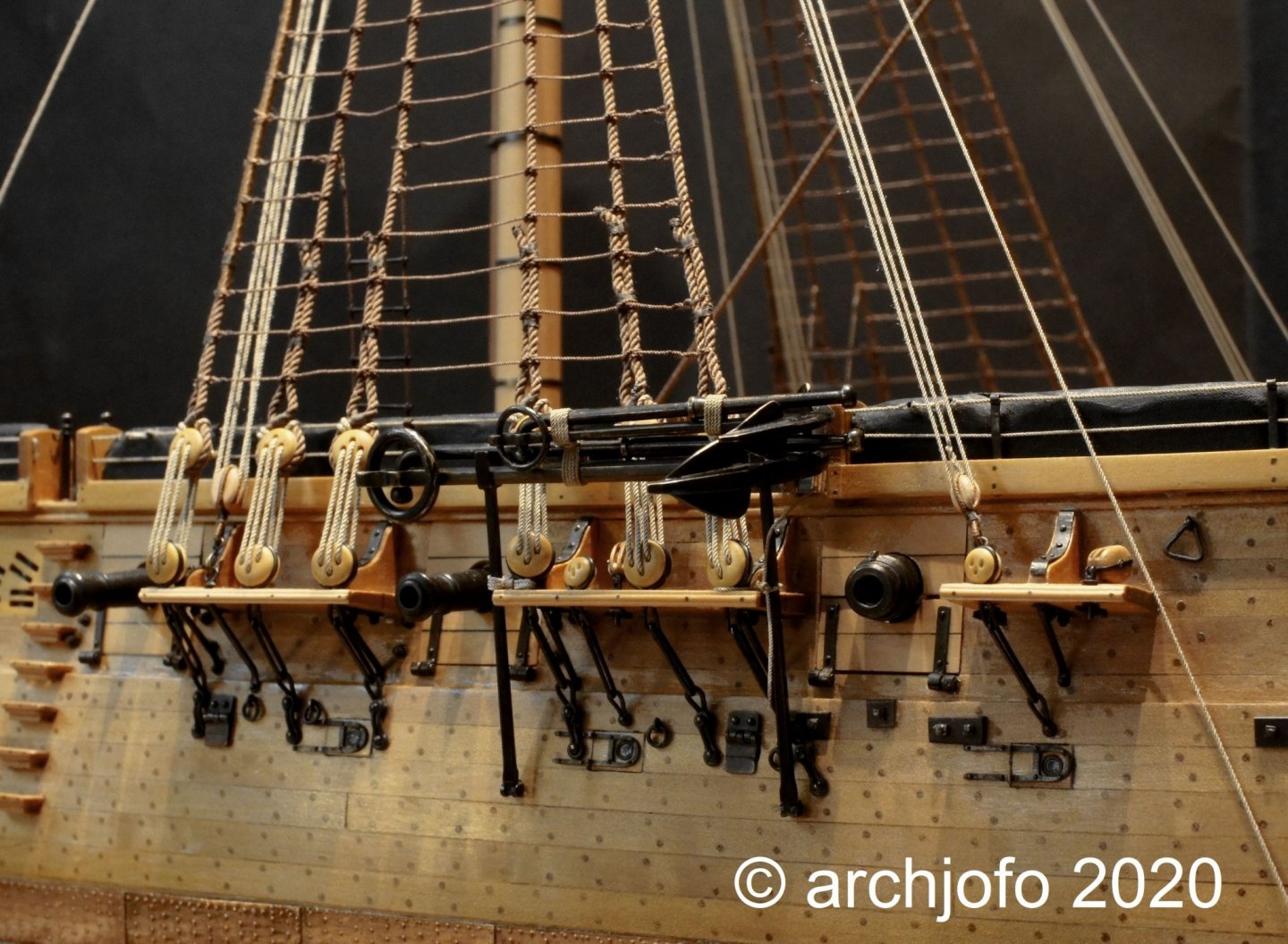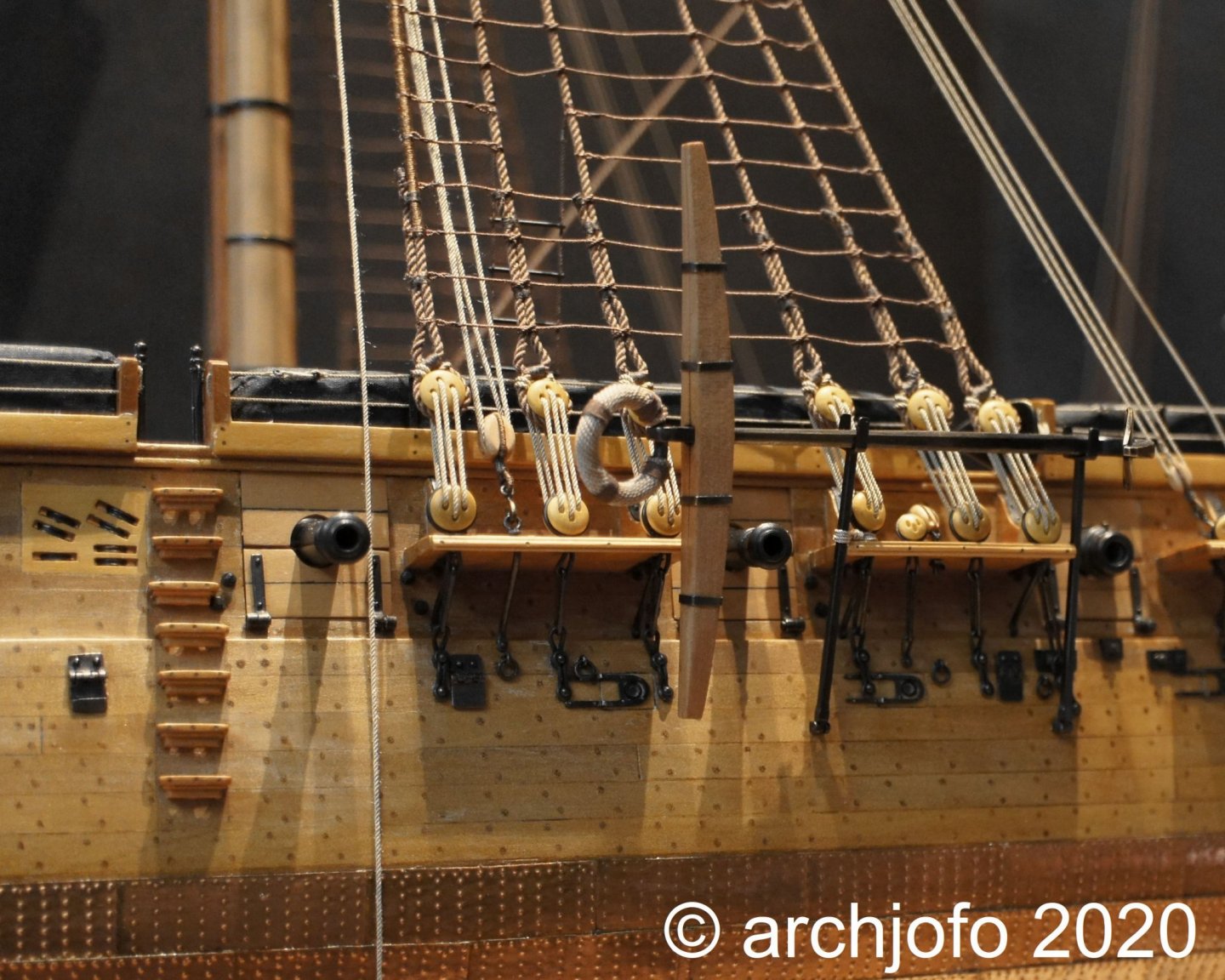-
Posts
1,495 -
Joined
-
Last visited
Content Type
Profiles
Forums
Gallery
Events
Everything posted by archjofo
-

Brig Eagle 1814 by ChadB
archjofo replied to ChadB's topic in - Build logs for subjects built 1801 - 1850
Fantastic work ! -
@Vladimir_Wairoa Hello, thank you very much for the kind words and thanks to all the others for the many LIKES. Continuation: Ratlines - Enfléchures It's been quite a while since I finished the ratlines for the main mast shrouds. Especially with monotonous work, it is good for motivation to deal with other details, such as the signpost blocks, in between and thus provide variety. Meanwhile I am again dealing with the ratlines, namely those of the mizzen mast shrouds, as you can see on the following pictures. The binding of the eye splice at the first and last shroud I have already described in detail in previous reports.
-
Hello, in the meantime I have made the 1 and 2-disc blocks, the special kind. So now a total of 30 pieces of this special block type are finished. As a reminder: it is a kind of guiding block which was fixed in the shrouds. In French these blocks are called "Moques de conduits". A kind of fairleads, but with discs.
-
@Ponto ".. 1.7 mm x .5mm sheaves???.....that is simply astonishing. How in the world is one even able to apply the groove to the perimeter of the sheave?" Excuse me, unfortunately I did not see your question and therefore did not answer it. But in the meantime I have posted a series of pictures for the production of these blocks. Maybe you have already seen them. The groove is simply made with a needle file.
-
@mbp521 @mugje @rtropp Hello, thank you very much for your positive comments. And thank you all for the many LIKES. That motivates me a lot. "Great work. I'm going to give it a try. Can you tell me where you got the patterns for the blocks?" Hello, Richard, for this special type of block, which is only attached to the shrouds, there are corresponding drawings in the Atlas du Génie Maritime on plate no. 212. Do you know the Atlas du Génie Maritime ? This is a collection of technical construction drawings of the French Navy from the 19th century. Here the corresponding plate no. 212:
-
Moques de conduits At the moment I'm still securing the taljereeps for the cross shrouds, so that I can continue with the installation of the ratlines afterwards. In the meantime, I am doing some interesting research on a detail that I have only seen in this form on La Créole so far. This is a kind of guiding block called "Moques de conduits". For the first time I noticed these blocks, which are attached to the inside of the shrouds, on pictures of the Paris model. Up to now little noticed, but now I have to deal with them. Source: Musée de la Marine Paris - La Crèole In the Atlas du Génie Maritime on plate no. 212 (blocks and other rigging accessories) I could find exactly the kind of shroud blocks shown on the pictures of the Paris model, as shown on the next drawing on the right. To the left of it I have also added a block with 3 discs. Source: Atlas du Génie Maritime on plate no. 212 According to the drawing, these blocks have the following dimensions in 1:48 scale: 1 - slice b= 2,4 mm to t=2,8 mm 2 - slice w= 3.2 mm to t=2.9 mm 3 - sliced b= 4.3 mm to t=3.0 mm, and each 1.8 mm thick. From the illustration in the atlas I was able to find out the French name for this kind of blocks. Unfortunately I was not able to find out the exact name of this block. Some time ago I described the production of guide blocks, which were placed inside in the area of the waterway. On the next picture from the monograph you can see very well that these guide blocks are in connection with the moques de conduits attached to the shrouds. Source: Musée de la Marine Paris - La Crèole According to this, it can be assumed that a total of 28 of these "signpost blocks" (conceivable designation) are to be produced, depending on the one with 1, 2 or 3 discs. I would be very happy if I could find out more about this kind of blocks. Maybe one of you has some information about this. See you soon ... Translated with www.DeepL.com/Translator (free version)
-
@Dziadeczek Hello, Thomas, thank you in advance for your compliments on the rope. I have also made many ropes from linen yarn. Colouring was still an issue then. The colouring experiments with wood stain were really promising. Therefore I would take wood stain from the company CLOU for example. See the picture below. By the way, Irish linen yarn from Barbour is said to be one of the best. In the end I decided to use silk yarn, which I make my ropes for the corvette. I'm very pleased with it. The results are quite impressive, aren't they? The silk yarns are available in many colors. Therefore, there is no need to colour he ropes.
-
@giampieroricci That's really a very nice compliment. Thank you for it. I also admire your wonderful models. It is always a pleasure to see that there is still interest in my report because of the many LIKES. I am pleased. After a little excursion to the anchors i continue with the shrouds for the mizzen mast. So in the first step the lower shrouds were aligned. Afterwards I start with securing the lanyards.
-
@Ainars Apalais @Jorge Diaz O Hello, thanks a lot for the nice words and all the others for the many LIKES After a short break I am about to put the smaller anchors with the iron stocks on the anchor bearings. The larger one was used as a reserve anchor; the smaller one was used as a throwing anchor or warp anchor. Contrary to the drawing by J. Boudriot I decided to place these anchors according to the Paris model. So these anchors are placed on the port side. Soon we will probably continue with the ratlines at foremast and cross mast. To be continued ...
About us
Modelshipworld - Advancing Ship Modeling through Research
SSL Secured
Your security is important for us so this Website is SSL-Secured
NRG Mailing Address
Nautical Research Guild
237 South Lincoln Street
Westmont IL, 60559-1917
Model Ship World ® and the MSW logo are Registered Trademarks, and belong to the Nautical Research Guild (United States Patent and Trademark Office: No. 6,929,264 & No. 6,929,274, registered Dec. 20, 2022)
Helpful Links
About the NRG
If you enjoy building ship models that are historically accurate as well as beautiful, then The Nautical Research Guild (NRG) is just right for you.
The Guild is a non-profit educational organization whose mission is to “Advance Ship Modeling Through Research”. We provide support to our members in their efforts to raise the quality of their model ships.
The Nautical Research Guild has published our world-renowned quarterly magazine, The Nautical Research Journal, since 1955. The pages of the Journal are full of articles by accomplished ship modelers who show you how they create those exquisite details on their models, and by maritime historians who show you the correct details to build. The Journal is available in both print and digital editions. Go to the NRG web site (www.thenrg.org) to download a complimentary digital copy of the Journal. The NRG also publishes plan sets, books and compilations of back issues of the Journal and the former Ships in Scale and Model Ship Builder magazines.



